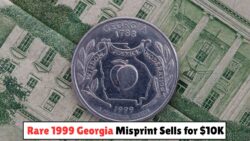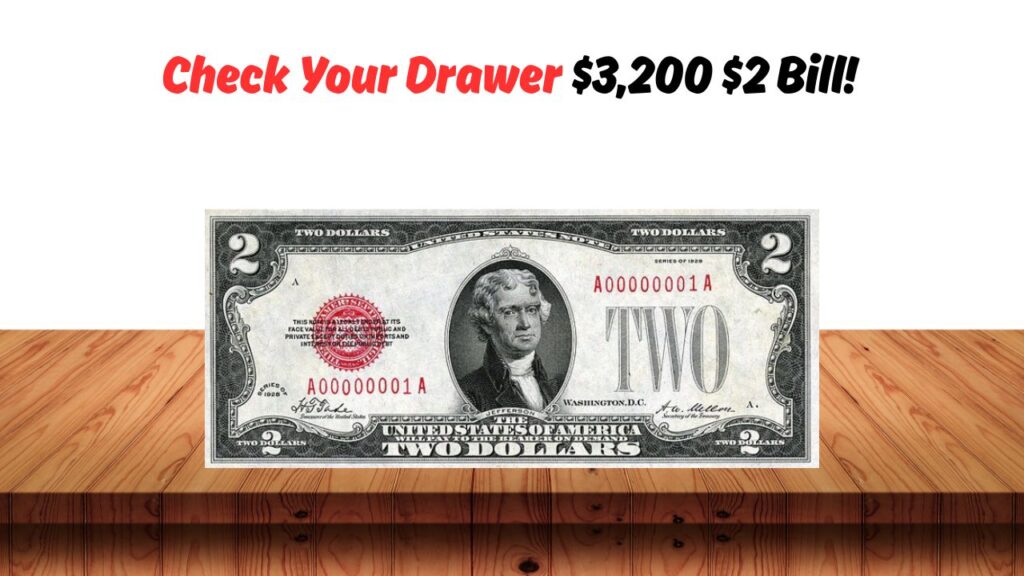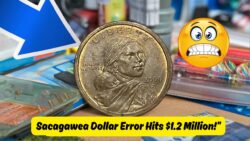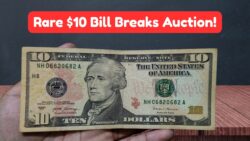Red Seal $2 Bill – If you’ve ever come across a $2 bill and dismissed it as just another low-value note, think again! A specific version of the $2 bill—one with a red seal from 1928—is now being valued at over $3,200 by collectors and auction houses. Once overlooked or stored away in drawers, this rare currency note is turning heads in the world of numismatics due to its historical value, scarcity, and demand among collectors. Let’s dive into what makes this $2 red seal bill so special and why it might be worth digging through your old boxes and envelopes to see if you’re holding a hidden treasure.
What Is the 1928 Red Seal $2 Bill?
The $2 red seal note from 1928 was part of the United States’ United States Note series. These notes were issued by the U.S. Treasury and not the Federal Reserve, which gives them unique historical significance.
Key Features:
- Issue Year: 1928
- Color of Seal: Red Treasury Seal
- Portrait: Thomas Jefferson on the front
- Back Design: Monticello (Jefferson’s estate)
- Signature Combination: Series 1928 features various signature pairs
Why Is It Worth So Much?
The surge in value is due to several critical factors that make the 1928 red seal $2 bill highly collectible.
 This 1999 Georgia Quarter With Misprint Just Hit $10,000 at Auction – Still in Circulation!
This 1999 Georgia Quarter With Misprint Just Hit $10,000 at Auction – Still in Circulation!
Main Factors Influencing Value:
- Age & Rarity: As the first small-sized $2 notes, 1928 series bills are much rarer than later issues.
- Condition (Grade): Uncirculated or crisp condition notes can fetch significantly more.
- Star Notes: Replacement notes with a star symbol are extremely rare and worth a premium.
- Serial Number: Low or fancy serial numbers can increase collector value.
- Historical Demand: Being one of the earliest red seal notes, it’s desirable for completing historical currency sets.
Recent Auction Sales & Value Chart
To better understand what your bill could be worth, here’s a table comparing various conditions and features of 1928 $2 red seal notes:
| Condition | Seal Type | Serial Number Type | Estimated Value |
|---|---|---|---|
| Circulated (average) | Red | Regular | $50 – $150 |
| Very Fine | Red | Regular | $200 – $400 |
| Crisp Uncirculated | Red | Regular | $750 – $1,200 |
| Uncirculated Star Note | Red | Star (*) at end | $2,500 – $3,200+ |
| Fancy Serial (e.g. 00000005) | Red | Fancy/Low | Up to $4,000+ |
How to Identify a Genuine 1928 Red Seal $2 Bill
If you think you might have one of these rare notes, here’s how to verify its authenticity and value.
Look For:
- Series Date: Clearly printed “Series of 1928” on the left side
- Red Treasury Seal: Round and on the right side of the note
- Serial Number: In red ink, located in two places on the front
- Portrait & Reverse: Thomas Jefferson on front; Monticello on reverse
Verification Tips:
- Avoid notes that have tears, ink stains, or tape—these lower the value.
- Notes professionally graded by agencies like PCGS or PMG often fetch higher resale prices.
Where Can You Sell or Appraise It?
Whether you want to keep your note as a collector’s item or sell it, there are many ways to get it evaluated or cashed in.
Selling Options:
- Online Auctions: eBay, Heritage Auctions, Stack’s Bowers
- Currency Dealers: Certified numismatic shops or dealers
- Collector Groups: Facebook groups, Reddit forums, currency clubs
- Local Coin Shows: Great place to get face-to-face appraisals
Pro Tip:
If you suspect your note is rare, get it professionally graded before selling. This adds credibility and often increases buyer trust and final price.
Common Variants of the 1928 $2 Red Seal
Here are the different sub-series under the 1928 series. All of them carry varying values.
| Series | Scarcity | Collector Value |
|---|---|---|
| 1928 | Common | Low to Medium |
| 1928A | Less Common | Medium |
| 1928B | Scarce | High |
| 1928C | Scarce | High |
| 1928D | Rare | Very High |
| 1928E | Extremely Rare | Very High + |
| 1928F | Rare | High |
Real-Life Example: From Drawer to Dollars
In a recent online auction, a South African resident visiting relatives in the U.S. found an old $2 red seal note among inherited items. After getting it graded, it was sold for $2,900 due to its crisp condition and a star serial. A perfect reminder that valuable currency can be hiding in plain sight!
The 1928 $2 bill with the red seal is no ordinary piece of paper—it’s a collector’s item with a rising market value. Whether you’re a seasoned collector or someone casually flipping through old drawers, it pays to keep your eyes open. With values reaching over $3,200, this small note could bring you a big payday.
FAQs
1. Is the 1928 $2 red seal still legal tender?
Yes, it is still legal tender, but it’s worth far more to collectors than just $2.
2. What does a red seal mean on U.S. currency?
A red seal indicates it’s a United States Note, not a Federal Reserve Note, which adds historical and collector value.
3. Can I use a red seal $2 bill at the store?
Technically yes, but you’d be losing out—these notes are worth much more to collectors.
4. How can I tell if my $2 bill is a star note?
Check the serial number. If it ends with a star (*), it’s a replacement note and typically more valuable.
5. Should I get my note graded?
If your note appears crisp or has no visible damage, grading can increase its value significantly when selling.





